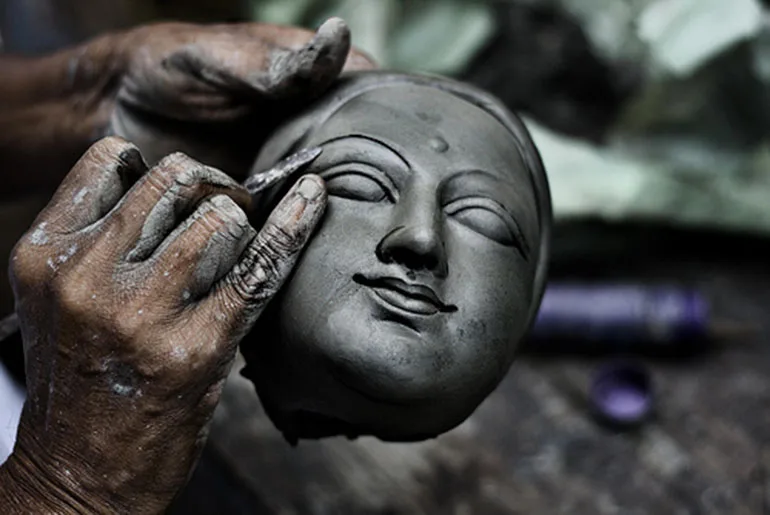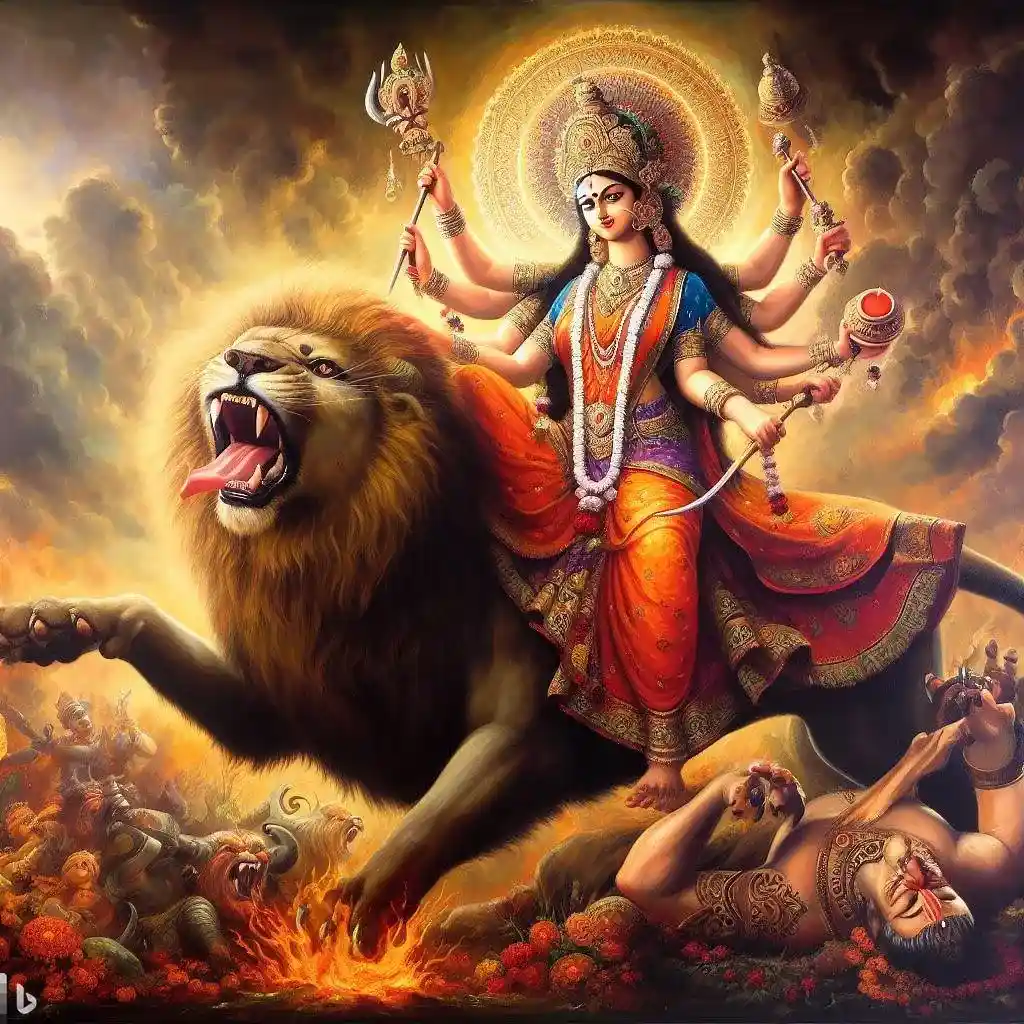Durga Puja is a major festival of Hinduism that celebrates the victory of the goddess Durga over the demon king Mahishasura. It is also a harvest festival that honors the goddess as the mother of all life and creation. Durga Puja is celebrated for ten days in the month of Ashvina, which corresponds to September–October in the Gregorian calendar. Let’s discover Durga Puja and Vijayadashami again !!

Discover Durga Puja and Vijayadashami with Some of the highlights :
- Mahalaya: This is the day that marks the beginning of Durga Puja. It is believed that on this day, Goddess Durga descends from her heavenly abode to her earthly home. People wake up early and listen to a special radio program that recites hymns and songs dedicated to the goddess.
- Shasthi: This is the sixth day of Durga Puja and the first day of the main celebrations. On this day, people welcome the goddess and her children (Ganesha, Kartikeya, Lakshmi, and Saraswati) with rituals and prayers. They also install clay idols of the goddess in their homes or in public pandals (temporary structures) decorated with lights, flowers, and art4.
- Saptami: This is the seventh day of Durga Puja and the second day of the main celebrations. On this day, people perform a special puja (worship called Pran Pratishtha, which means infusing life into the idols of the goddess. They also offer food and water to the goddess and her children as a sign of devotion.
- Ashtami: This is the eighth day of Durga Puja and the third day of the main celebrations. On this day, people perform another special puja called Sandhi Puja, which marks the transition from Ashtami to Navami (the ninth day). This is considered to be the most auspicious time of Durga Puja, as it is believed that on this moment, Goddess Durga killed Mahishasura. People also perform Kanya Puja, which involves worshipping young girls as manifestations of the goddess.
- Navami: This is the ninth day of Durga Puja and the fourth day of the main celebrations. On this day, people worship Maa Siddhidatri, the ninth form of Goddess Durga, who grants all kinds of siddhis (supernatural powers) to her devotees. They also perform Maha Aarti, which is a grand ritual of waving lamps and incense before the goddess.
- Dashami: This is the tenth and final day of Durga Puja. On this day, people bid farewell to the goddess and her children with tears and joy. They immerse the idols in a river or a lake, symbolizing their return to their heavenly home. They also exchange greetings and gifts with their friends and relatives and seek blessings from their elders.
In her ten hands she carries –
- Trident ( Trishul): This is the weapon of Lord Shiva, her consort. It represents the three aspects of creation, preservation, and destruction.
- Sword: This is the symbol of wisdom and courage. It cuts through ignorance and falsehood.
- Lotus: This is the symbol of purity and beauty. It blooms in muddy waters, unaffected by its surroundings.
- Conch shell: This is the symbol of sound and vibration. It announces the arrival of Goddess Durga and her victory over evil. The conch also represents the cosmic sound, Om, and the call to dharma (righteousness).
- Chakra (Discus): The discus symbolizes the wheel of time and the cycle of creation and destruction.
- Gada (Mace): The mace represents the power of knowledge and strength.
- Bow and Arrow: These weapons represent energy and their ability to be directed toward a specific goal.
- Shield: The shield is a symbol of protection and the ability to defend against evil.
- Japa Mala (Rosary): The rosary symbolizes the continuous cycle of time and the repetition of the divine name.
- Kettle Drum (Damaru): The drum represents the rhythm of creation, and its sound signifies the heartbeat of the universe.
Durga Puja and Navratri are two festivals that celebrate the worship of Goddess Durga, but they have some differences in their rituals and traditions. Here are some of the key differences between them:
- Duration: Durga Puja lasts for ten days, while Navratri lasts for nine days.
- Origin: Durga Puja is mainly celebrated in West Bengal and other eastern states of India, while Navratri is celebrated in northern and western parts of India.
- Story: Durga Puja commemorates the victory of Goddess Durga over the buffalo-demon Mahishasura, while Navratri commemorates the victory of Lord Rama over the ten-headed demon Ravana.
- Food: Durga Puja is a time to enjoy various non-vegetarian delicacies, while Navratri is a time to observe a strict vegetarian diet.
- Rituals: Durga Puja involves installing clay idols of the goddess and her children in public pandals, performing pujas, and immersing the idols in water on the last day. Navratri involves worshipping nine forms of the goddess, performing dances like Garba and Dandiya, and burning effigies of Ravana on the last day.
